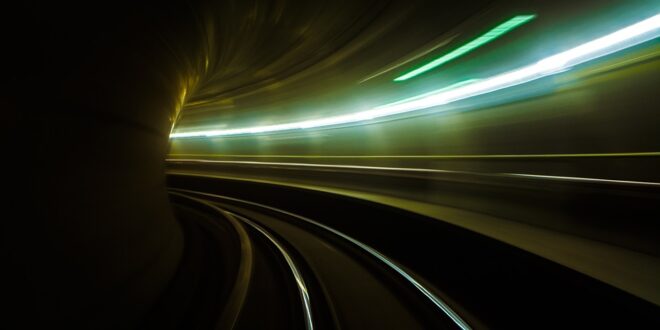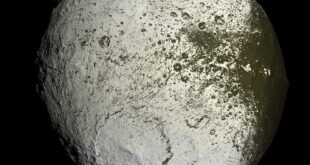20 Mind-Blowing Facts about Space Stations You Didn’t Know
Introduction
Space stations are exciting and fascinating places where humans have been conducting research and experiments for more than fifty years. In this article, we have compiled 20 amazing facts about space stations that will leave you surprised and blown away.
Fact #1: The International Space Station is the largest artificial structure in space.
- The ISS is larger than a football field.
- It weighs over 900,000 pounds.
- The space station orbits Earth at about 17,500 miles per hour.
Fact #2: Living in space can make you taller.
- Without gravity compressing the spine, astronauts can grow up to two inches taller while in space.
- However, they returned to their normal height upon coming back to Earth.
Fact #3: Space stations have artificial gravity.
- Artificial gravity is created by rotating the space station.
- Sick bags are provided for inexperienced astronauts who may experience motion sickness onboard.
- Such a system could prevent negative health effects caused by extended periods in zero gravity.
Fact #4: There have been nine space stations orbiting Earth.
- The first space station, Salyut 1, was launched by the Soviet Union in 1971.
- Salyut 1 stayed in orbit for 175 days.
Fact #5: Spacecraft can visit the International Space Station.
- The ISS has been visited by various spacecraft, including the Space Shuttle and SpaceX’s Crew Dragon.
- The first module of the ISS was launched by a Russian Proton rocket in 1998.
Fact #6: You’re not allowed to bring bread in space.
- Bread may cause crumbs which can be a hazard for instruments and even astronauts’ nostrils.
- Crispbread is allowed in space as it doesn’t cause crumbs.
Fact #7: Astronauts use teamwork to maintain space stations.
- Everyone onboard the space station must work together or risk failure of the mission.
- Tasks can range from conducting experiments to repairing life-support systems.
Fact #8: The International Space Station is roughly the size of a six-bedroom house.
- It has about 12,000 cubic feet of inhabitable space.
- There are over 900 active experiments taking place onboard the ISS.
Fact #9: Food packaging plays a vital role in space station missions.
- Food is stored in compressed wads and sometimes served, minced, with mineral oil to hold it together.
- Another challenge is keeping the food warm, as this requires both heating and insulation.
Fact #10: One challenge of space station life is dealing with bodily fluids.
- Urine is the only liquid disposal as water is precious in space.
- The urine is treated with bleach and then filtered so that it can be reused.
Fact #11: The first U.S. space station was nearly destroyed on takeoff.
- In 1973, the Skylab space station was hit and nearly shattered by its own booster rocket upon takeoff.
- The manual use of a parasol-style canopy turned out to be crucial to save Skylab. An astronaut tethered with a cord had repaired the angled sunshade of the easily savable space station.
Fact #12: There’s a barber shop on the International Space Station.
- The hair clippings are carefully collected to prevent them from getting into the air vents or inhaled by other crew members.
- The off-time is scheduled and haircuts offered as a free time activity.
Fact #13: Space is beautiful – both during the daytime and nighttime.
- You cannot stargaze on Earth quite like how you can from low-Earth orbit.
- During the day, the world appears to be in high-yield-energy-burn mode as everything on planet Earth seems to be buzzing with activity.
Fact #14: Space redounds to our benefit via numerous spinoffs.
- The spinoffs of the different Space organizations ultimately benefit society from adapting medical equipment to water research and computer technology.
- Since the first orbit by Yuri Gagarin in 1961, a litany of beneficial applications have spin off from space technologies for different aspects of life.
Fact #15: Astronauts can make phone calls from space.
- An onboard phone system allows crew members to stay in contact with their loved ones on Earth.
- There is a limit, however – calls to Earth can only be made during the ISS’s daylight hours.
Fact #16: Space can lead to uncontrolled laughter.
- Astronauts have reported fond memories of being in cosmic surroundings. · Humor overload is contagious in space has astronauts triggering forced contagious laughter with fellow crew members or mission control.
.
Fact #17: Spacecraft can traverse incredible distances.
- The longest space station mission was Expedition 2’s deployment for six-months of 2001 in the ISS
- The New Horizons mission traveled nine years and three billion miles from Earth to fly by Pluto in 2015.
Fact #18: Spacewalks are necessary for maintenance of the ISS.
- The ISS is vulnerable to micro-meteoroid impacts, which can damage the station’s external equipment and exterior.
- 86% of space debris closer than 1,240 miles (2,000 kilometers) to the Earth collapses and closer to the plasmatic atmosphere layer frequently visited by Space Station vehicles.
Fact #19: Space debris is a big challenge for space station missions.
- There is a high amount of space debris floating in low Earth orbit, in addition to potential collisions with active satellites and other spacestations.
- The Threat of a stuff impact at orbital space station driving with recorded speeds beyond 22,000 mph (36,000 kilometers per hour) is an existential threat given the structural fragility of space technology.
Fact #20: Space stations inspired tremendous feats of human exploration.
- The International Space Station is the most expensive object ever made done by people, comprising a total cost of $100 billion.
- India made a landmark achievement to pioneer reusable sheets in the completed and operational proof-of-concept test for the country’s own crewed spacecraft called a Human Space Flight in 2014.
Conclusion.
Space stations, with their complexity, dangerous environments, and hard work, inspire readers. The above astonishing facts increase reasoning and shows that quality of information and training regarding the accumulated knowledge existing proves to be even more vital than ever having experts stored on the planet surface itself.
 Mind Uncharted Explore. Discover. Learn.
Mind Uncharted Explore. Discover. Learn.



